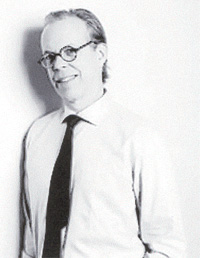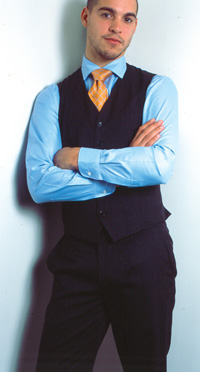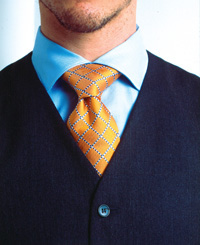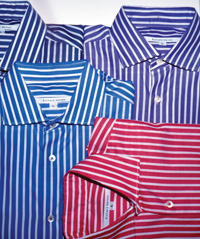|
By Jackie Rosselli Its no secret Americans love to eat out. Our penchant for the experience has been blamed for everything from the rise in obesity to the loss of at-home culinary skills. But it has also created an economic boon, turning the restaurant industry into a big business moneymaker. With over 900,000 locations and 12.2 million employees, the restaurant industry is the largest employer in the United States besides government. According to the National Restaurant Association, industry sales were forecast to advance 4.9 percent in 2005 and equal 4 percent of the U.S. gross domestic product. Every dollar spent by consumers in restaurants generates an additional $1.98 spent in other industries allied with the restaurant industry, and every additional $1 million in restaurant sales generates an additional 42 jobs for the nations economy. As expected, competition in this industry is fierce. A new restaurant can sometimes appear to spring up overnight and can close in a similarly dizzying pace. Of the new eateries that open, 85 percent will fail within their first year of service. Its no wonder, then, that restaurants are pushing to distinguish themselves, to not only stand out but to rise above the trends and gimmicks of their counterparts. Of course one of the best ways for a restaurant to distinguish itself is through its uniform program. Dress plays an important role in restaurants these days, says Richard Haines, a designer who has developed programs for some of the countrys finer restaurants, including the Union Square Caf and Gramercy Tavern, both in New York. A well-dressed server will reinforce the restaurants identity in the customers mind. On the flip side, a poorly dressed employee also makes a statement, and thats probably a message that cant afford to be sent nowadays. Fashion designers collaborating with the uniform industry isnt a new concept for years they have dotted the landscape, primarily in the hospitality and transportation fields. What is new, however, is that more and more end users are turning directly to designers to solve their apparel woes. The cookie cutter approach to uniform wear is out, says Haines. People in general are looking for a more individualized form of expression. Why shouldnt that be true of restaurants? Restaurants have always valued dcor, and now they are incorporating clothing to express their identity and add style to the dining experience. This outward expression of individuality is the perfect forum in which to thrive, and as such, designers are being drawn to the industry in record numbers, revamping the images of airlines and, most recently, restaurants. With so many restaurants, the opportunities are tremendous, says Haines. Eating out is not just about filling a void its about entertainment, theater. People want an experience, a complete package, and part of that can be expressed through a clothing program. A relative newcomer to the industry, Haines incorporates American simplicity, integrity and function into his designs. His unique skills and perspective were developed working with the most influential American designers, including Bill Blass, Calvin Klein and Perry Ellis. Under the guidance of these designers, Haines developed a strong and unique sense of color, pattern, shape and detail. I learned a lot about branding and image while working with Calvin Klein, and carried this over to the restaurant business, says Haines. Haines credits talent and a bit of good fortune with his venture into the uniform industry. Says Haines, I have always loved really beautiful fabrics with great cuts. I was looking for a niche, something to specialize in, where I could apply my creative talents to enhance a space. I knew Danny Meyer, the restaurateur, and he mentioned that he was looking to redesign the shirts at one of his restaurants. He asked if I wanted the job, and I, of course, jumped at it. Danny Meyer is a legend at fine dining establishments, particularly in New York. Twenty years ago, in October of 1985, Danny Meyer opened his first restaurant, Union Square Caf, commonly referred to as USC. A new breed of American eatery, USC paired imaginative food and wine with caring hospitality, comfortable surroundings and exceptional value. Serving American cuisine with an Italian soul, USC was an immediate hit. Mahogany moldings outline white walls hung with splashy modern paintings. In addition to the three dining areas, theres a long bar ideal for solo diners. The cuisine is American with a thick Italian accent; for example, the signature tuna burger can land on the same table as homemade gnocchi. It was the redesign of the shirts worn by the servers at the Union Square Caf that became Haines first assignment. It was a great way to launch a career, he says. The Union Square Caf was considered very revolutionary when it opened, because it served high-quality food in a relaxed atmosphere. To get such a meal before, you had to go to a restaurant that was to some stodgy, more European in feel. Union Square Caf changed all that. There are approximately 35 employees who don Haines creations at the caf. Focusing on one element of the outfit and using colors, pattern and fit which are specifically geared to the restaurant, Haines created a narrow white striped shirt colored in four distinct backgrounds: navy, pale blue, pale pink or pale gray. The crisp stripes work to complement the straightforward cuisine and have a hip, urban feel, perfect for this downtown eatery. Haines 100 percent cotton shirts are manufactured from Italian fabric and feature an incredible 20 stitches per inch, rimless pearl buttons, and side panel details for shape and contour. Female wait staff in particular are thrilled with the new design. The shirts are fitted and therefore flattering, says Haines. Before, female servers wore the same shirt as men, and they were miserable. The shirts are paired with black trousers made of 100 percent wool. Over time, Haines also developed a series of pure wool vests and ties made of imported fabric to complete a program that is expected to run three years. Haines notes that ties, long out of favor, are an integral part of a restaurants look nowadays. Ties are back in a big way, he says. They are a great way to make a statement about a space. You can use them to add a splash of color, or to set mood. They certainly give you more bang for your buck. Haines says that technological advancements in wool and cotton fabrics have made any concerns about their practicality in the restaurant setting moot. Fabrication has come a long way, and thats probably a reason why more creative people are getting involved in the uniform industry. Designers can now use their talents to develop programs that are both functional and good looking, he says. There are many lightweight wools around, and cotton, in particular, is a really durable fabric when it is well woven. Besides, 100 percent cotton breathes, and for the wait staff, comfort is important. The feedback has been overwhelmingly positive. People at this level in this type of restaurant are professionals, and they have a right to comfortable clothing, to garments that elevate their status, Haines says. I have had employees come up to me and say that they feel like theyre going to make more money because they have such a polished look. Haines latest restaurant program can also be found in New York at the Gramercy Tavern. The tavern is a warm, appealing establishment, with a classic but unpretentious look. Haynes says the feel is American, like a tavern, but the food is definitely upscale. Indeed, the menu features foods folks crave with elements they usually shy away from and reads like a holiday meal at the house of a friend who loves to cook almost as much as he loves to challenge himself. Launched in early 2005, the Tavern program features a solid, medium blue shirt of imported fabric with all the Haines trademarks. A 100 percent Italian silk tie is colored in orange with specks of blue throughout and provides a nice accent to the shirt. The charcoal pants and vests are 100 percent Dacron wool and are again made of imported fabric. Haines insists that the casual look is all but dead, at least for now. People want to feel special when they walk into a restaurant, they want to be part of the glamour that has been created by pop culture, he says. Casual is simply not what people are looking for right now in hospitality. Still, most of what Haines has designed for can be considered upscale. Can the same reasoning be applied at the other end of the spectrum? According to Haines, one need look no further than McDonalds for the answer. Is there a market for an upscale image at different price points? Yes. Just look at McDonalds and the news that they want to rework their look. There is no doubt that you can have the elements of fashion at many price points. Walk into a mass-market retailer like Target, and youll see that everyone is upscaling. Its what sells. Contact Richard Haines at 800-848-6221, or by visiting richard-haines.com. |
|
| Above story first appeared in MADE TO MEASURE Magazine, Spring & Summer 2006 issue. All rights reserved. Photos appear by special permission. | |
| Halper Publishing Company 633 Skokie Blvd, #490 Northbrook, IL 60062 (847) 780-2900 Fax (224) 406-8850 [email protected] |
|
Home Spring & Summer 2006 Designer Richard Haines Delivers Style & Fashion to Restaurant Uniform Programs














